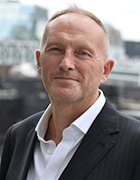
UK government upgrades over 50 existing mobile masts across nations
UK government claims mobile signal boost across UK countryside covering area larger than 66,000 football pitches, with masts across England, Scotland and Wales, including natural parks such as Snowdonia and Lake District
Looking to use advanced comms technology to support its Plan for Change, developing local tourism and economic growth, the UK government has extended its Shared Rural Network (SRN) programme to see over 50 mobile communications masts, initially only used to connect EE customers and those calling 999, upgraded to provide coverage from all mobile network operators to improve connectivity in rural communities across Britain.
First announced in 2019, the £1.3bn SRN programme was designed to wipe so-called not-spots from the map, providing high-quality 4G coverage to 95% of the UK by the end of 2025.
The principle of the project was that through both public and private investment, mobile phone masts would be built or upgraded across the UK to close down rural mobile not-spots, that is areas that had poor or patchy coverage and could not receive a 4G signal from all four mobile network operators (MNOs), or any signal at all.
The UK’s four MNOs – EE, Virgin Media O2, Three and Vodafone – all committed to invest £532m to improve 4G coverage and level up connectivity overseen by a jointly owned company called Digital Mobile Spectrum Limited (DMSL). The operators’ funding has been complemented by more than £500m from the government.
To deliver the first phase of the programme, all operators committed to upgrade or build mobile infrastructure and extend the reach of their 4G networks to eliminate partial not-spots by 2024, and the second phase of the SRN, publicly funded by the UK government, is due to be completed in 2027. This will see the roll-out of shared masts to bring 4G connectivity to areas that hitherto had no existing mobile service.
Since the SRN began over 10,000 sq km have coverage for the first time. Almost 35,000 sq km across the UK now has coverage from all four operators, including over 3,500 sq km in Wales, which is covering roughly 20% of the country. The upgraded masts are calculated to cover a footprint equivalent to the size of 66,470 football pitches, and over half of them are providing new coverage to areas of outstanding natural beauty or national parks. The UK government assured that the upgrade of existing masts will limit the visual and natural impact on the environment, causing less disruption to the surrounding areas.
Specific areas set to benefit from the new roll-out boost include the North York Moors National Park, parts of the Southern Upland Way and the Shropshire Hills. Wales sees the biggest connectivity boost, with remote parts of Berwyn Mountains, Brecon Beacons and the Clwydian Range and Dee Valley now covered by all four UK networks. To expand coverage even further, 50 more government funded sites in England, Wales and Scotland are also being targeted for upgrades by March 2026.
Read more about UK rural mobile comms
- Defra taps BT to connect workers, sensors across UK: Department for Environment, Food and Rural Affairs inks deal to provide 34,000 mobile connections to support real-time reporting on issues from flooding to farming disease outbreaks and improve connectivity and safety for remote workforce.
- VMO2 hits high as it completes Shared Rural Network first phase: Glencoe Mountain Resort in Scotland becomes 227th site to gain improved 4G coverage as part of VMO2 roll-out.
- Virgin Media O2 claims Shared Rural Network milestone: Community-owned island In the Hebrides becomes 150th site to benefit from improved mobile connectivity after operator deploys helicopters, boats and off-road vehicles to deliver and install a 4G mast to Isle of Eigg.
- UK mobile operators ramp up Shared Rural Network commitments: Pace quickens in £1bn UK scheme to improve mobile coverage in so-called hard-to-reach areas, with leading operators making extension to footprint in rural Wales and Scotland.
Under part of the SRN, working with the Home Office, the UK government’s investment is also focused on upgrading Emergency Services Network masts to provide coverage from all four mobile operators which had previously only connected EE customers and anyone making 999 calls.
“The growth potential of our areas of outstanding natural beauty must not be stunted by patchy internet,” said UK telecoms minister Chris Bryant. “This milestone is a major step forward for better connectivity for all corners of the UK, meaning everyone can reap the benefits of the digital age. From boosting tourism and business opportunities to providing safer outdoors experiences for visitors to our treasured countryside.”
Ben Roome, CEO of Mova, the operating brand for DMSL and wholly owned by the forum main operators, said: “This is a big milestone for rural mobile coverage … helping to close the mobile coverage gap for residents, businesses and visitors. These masts build on the success of the mobile operators hitting their industry-funded targets a year early.
“Since the Shared Rural Network began, coverage from all four operators has grown from 66% to 81% of the UK – an increase the size of Wales and Northern Ireland combined,” he said. “With further sites being upgraded and built over the next two years, more people in rural areas will benefit from better mobile coverage.”








